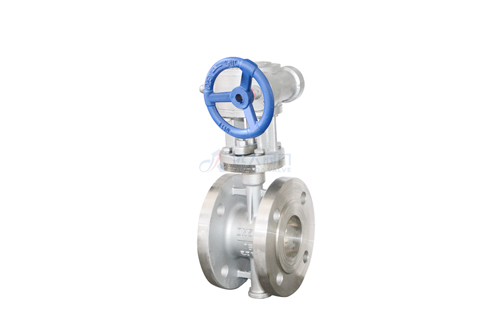Butterfly valves are one of the most useful valves in piping systems. They enable the operator to start, stop or restrict fluid flow in the system. This method is especially useful if you need to repair, clean, or modify the system, and you want to make sure that no liquid passes through the pipeline.
Despite this name, the butterfly valve does not look like a butterfly. Butterfly valves are quarter-turn valves, which means they go from fully open to fully close at a 90-degree angle. A butterfly is called a "butterfly" because its wings move around a central axis, just like the body of a butterfly. But for a butterfly valve, there is much more to it than the central disc.
Butterfly valve components
At the most basic level, a butterfly valve consists of a disc, a valve seat, a valve body, and an actuator. Most butterfly valves have more parts, but they are an essential part of a butterfly valve.
Actuator: This part is also called handle or manipulator. It controls the opening or closing distance of the butterfly valve. It is usually a handle that can move 90 degrees, but it can also be a faucet-like rotating handle. On the valve above, you can squeeze the handle to operate the actuator.
Seat: The seat of a butterfly valve is usually made of some kind of rubber. It ensures that when the valve is in the closed position, there will be a tight and safe seal. If the butterfly valve stops working properly, it is likely that the valve seat has been damaged in some way.
Disc: The disc is what gives a butterfly valve its name. When the disc rotates, the valve opens, giving the disc a butterfly-like appearance. The disc is moved by the actuator and can be completely closed, completely opened, or somewhere in between.
Body: The body of a butterfly valve enables it to be connected to pipes and fittings. It is everything around the valve seat and constitutes a large part of the valve structure.
What is actuation and why is it important?
Actuate literally means "to put into action." Therefore, when you activate the butterfly valve, you are putting it into action. The default state of the butterfly valve is closed; this does not allow liquid to pass through. If you want the fluid to flow through without any drop inflow pressure, you can turn the handle 90 degrees to fully activate the butterfly valve.
When people usually talk about actuation in butterfly valves, they are actually talking about automation. When a butterfly valve must be opened to a very specific degree, you can choose an electrically actuated butterfly valve. These are also useful if your butterfly valve needs to be opened and closed frequently.
What makes these valves so valuable and different from other valves is that they have more than two positions. It can be opened anywhere from 0 degrees to 90 degrees. The more open the blood vessels, the more fluid will pass through. Although some piping systems do not require local flow, many other systems do.
Gas: When adjusting the flow of compressed air or other gases, it is often extremely important to control how much gas flow. The butterfly valve works equally well for gas and liquid. When used correctly, these valves can act as dampers to control the flow so that only the specified amount passes.
Liquid: The obvious application of butterfly valves is liquid conveying. In agriculture and manufacturing, regulating the flow of water and other liquids is crucial. If you allow too much water in the irrigation system, you may over-irrigate your crops and destroy your crops. The butterfly valve allows you to select the amount of liquid to pass through the system.
We are butterfly valve suppliers. If you are interested in our products, please feel free to contact us.


没有评论:
发表评论